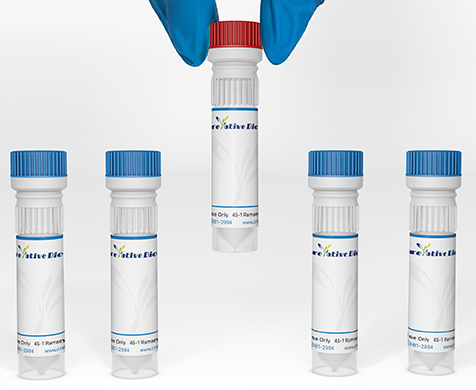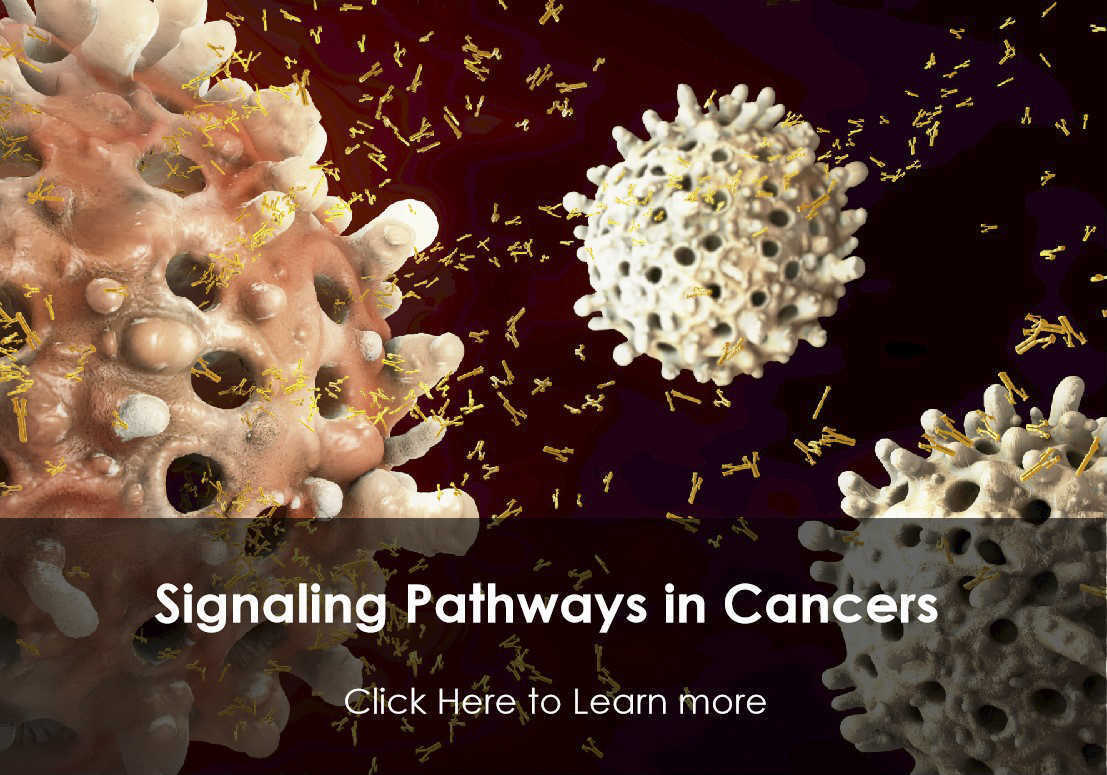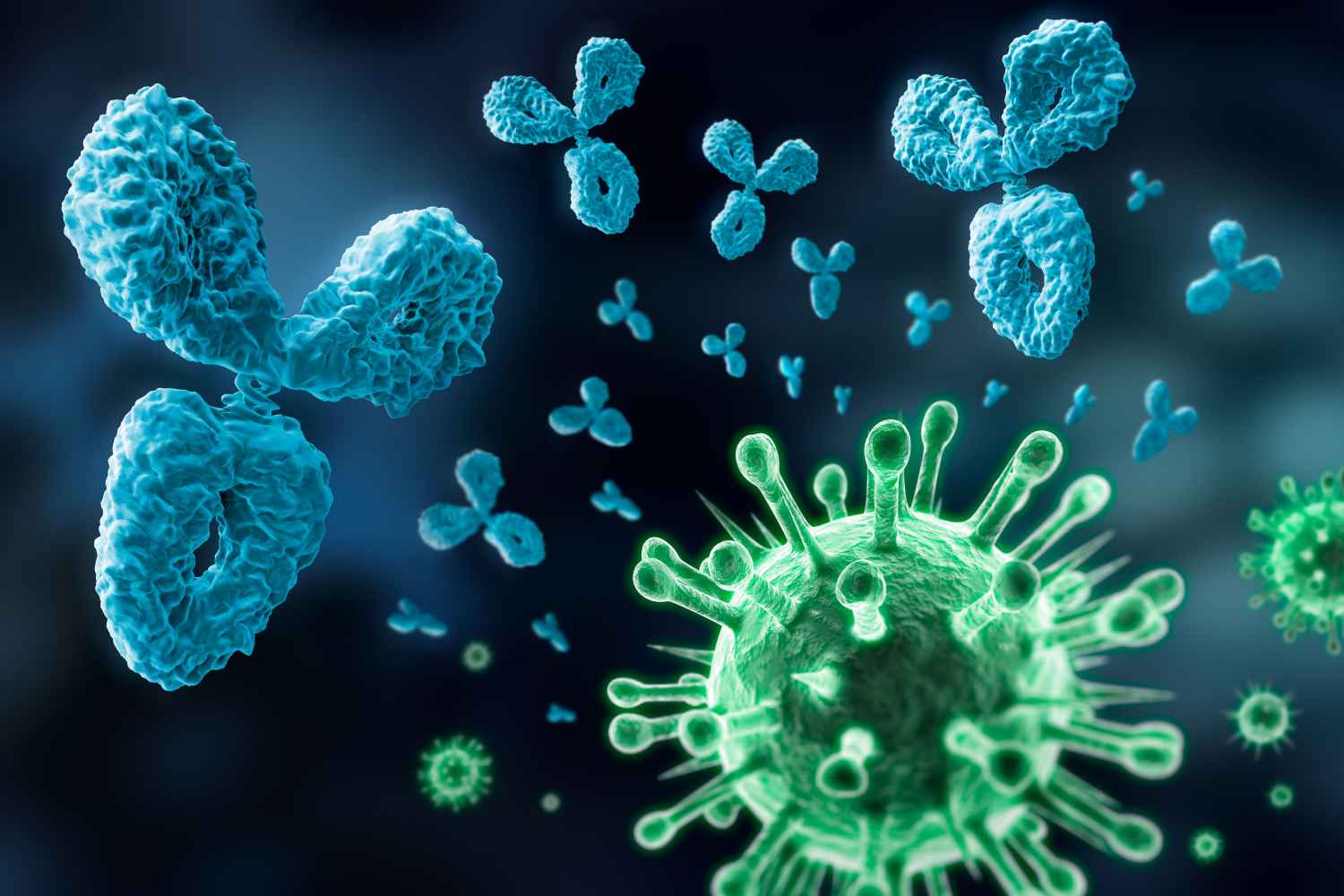KCNH2
This gene encodes a voltage-activated potassium channel belonging to the eag family. It shares sequence similarity with the Drosophila ether-a-go-go (eag) gene. Mutations in this gene can cause long QT syndrome type 2 (LQT2). Transcript variants encoding distinct isoforms have been identified.
Full Name
Potassium Voltage-Gated Channel Subfamily H Member 2
Function
Pore-forming (alpha) subunit of voltage-gated inwardly rectifying potassium channel. Channel properties are modulated by cAMP and subunit assembly. Mediates the rapidly activating component of the delayed rectifying potassium current in heart (IKr) (PubMed:18559421, PubMed:26363003, PubMed:27916661).
Isoform A-USO
Has no channel activity by itself, but modulates channel characteristics by forming heterotetramers with other isoforms which are retained intracellularly and undergo ubiquitin-dependent degradation.
Isoform B-USO
Has no channel activity by itself, but modulates channel characteristics by forming heterotetramers with other isoforms which are retained intracellularly and undergo ubiquitin-dependent degradation.
Isoform A-USO
Has no channel activity by itself, but modulates channel characteristics by forming heterotetramers with other isoforms which are retained intracellularly and undergo ubiquitin-dependent degradation.
Isoform B-USO
Has no channel activity by itself, but modulates channel characteristics by forming heterotetramers with other isoforms which are retained intracellularly and undergo ubiquitin-dependent degradation.
Biological Process
Cardiac muscle contractionManual Assertion Based On ExperimentIMP:BHF-UCL
Cellular response to xenobiotic stimulusManual Assertion Based On ExperimentIDA:BHF-UCL
Membrane depolarization during action potentialManual Assertion Based On ExperimentIDA:BHF-UCL
Membrane repolarizationManual Assertion Based On ExperimentIMP:UniProtKB
Membrane repolarization during action potentialManual Assertion Based On ExperimentIDA:BHF-UCL
Membrane repolarization during cardiac muscle cell action potentialManual Assertion Based On ExperimentIMP:BHF-UCL
Membrane repolarization during ventricular cardiac muscle cell action potentialManual Assertion Based On ExperimentIMP:BHF-UCL
Negative regulation of potassium ion export across plasma membraneManual Assertion Based On ExperimentIDA:BHF-UCL
Negative regulation of potassium ion transmembrane transportManual Assertion Based On ExperimentIDA:BHF-UCL
Positive regulation of potassium ion transmembrane transportManual Assertion Based On ExperimentIDA:BHF-UCL
Positive regulation of transcription, DNA-templatedManual Assertion Based On ExperimentIMP:ARUK-UCL
Potassium ion export across plasma membraneManual Assertion Based On ExperimentIDA:BHF-UCL
Potassium ion homeostasisManual Assertion Based On ExperimentIDA:BHF-UCL
Potassium ion import across plasma membraneManual Assertion Based On ExperimentIDA:BHF-UCL
Potassium ion transmembrane transportManual Assertion Based On ExperimentIDA:BHF-UCL
Regulation of heart rate by cardiac conductionManual Assertion Based On ExperimentIMP:BHF-UCL
Regulation of heart rate by hormoneManual Assertion Based On ExperimentTAS:BHF-UCL
Regulation of membrane potentialManual Assertion Based On ExperimentIDA:BHF-UCL
Regulation of membrane repolarizationManual Assertion Based On ExperimentIDA:BHF-UCL
Regulation of potassium ion transmembrane transportManual Assertion Based On ExperimentIDA:BHF-UCL
Regulation of ventricular cardiac muscle cell membrane repolarizationManual Assertion Based On ExperimentIMP:BHF-UCL
Ventricular cardiac muscle cell action potentialManual Assertion Based On ExperimentIMP:BHF-UCL
Cellular response to xenobiotic stimulusManual Assertion Based On ExperimentIDA:BHF-UCL
Membrane depolarization during action potentialManual Assertion Based On ExperimentIDA:BHF-UCL
Membrane repolarizationManual Assertion Based On ExperimentIMP:UniProtKB
Membrane repolarization during action potentialManual Assertion Based On ExperimentIDA:BHF-UCL
Membrane repolarization during cardiac muscle cell action potentialManual Assertion Based On ExperimentIMP:BHF-UCL
Membrane repolarization during ventricular cardiac muscle cell action potentialManual Assertion Based On ExperimentIMP:BHF-UCL
Negative regulation of potassium ion export across plasma membraneManual Assertion Based On ExperimentIDA:BHF-UCL
Negative regulation of potassium ion transmembrane transportManual Assertion Based On ExperimentIDA:BHF-UCL
Positive regulation of potassium ion transmembrane transportManual Assertion Based On ExperimentIDA:BHF-UCL
Positive regulation of transcription, DNA-templatedManual Assertion Based On ExperimentIMP:ARUK-UCL
Potassium ion export across plasma membraneManual Assertion Based On ExperimentIDA:BHF-UCL
Potassium ion homeostasisManual Assertion Based On ExperimentIDA:BHF-UCL
Potassium ion import across plasma membraneManual Assertion Based On ExperimentIDA:BHF-UCL
Potassium ion transmembrane transportManual Assertion Based On ExperimentIDA:BHF-UCL
Regulation of heart rate by cardiac conductionManual Assertion Based On ExperimentIMP:BHF-UCL
Regulation of heart rate by hormoneManual Assertion Based On ExperimentTAS:BHF-UCL
Regulation of membrane potentialManual Assertion Based On ExperimentIDA:BHF-UCL
Regulation of membrane repolarizationManual Assertion Based On ExperimentIDA:BHF-UCL
Regulation of potassium ion transmembrane transportManual Assertion Based On ExperimentIDA:BHF-UCL
Regulation of ventricular cardiac muscle cell membrane repolarizationManual Assertion Based On ExperimentIMP:BHF-UCL
Ventricular cardiac muscle cell action potentialManual Assertion Based On ExperimentIMP:BHF-UCL
Cellular Location
Cell membrane
Involvement in disease
Long QT syndrome 2 (LQT2):
A heart disorder characterized by a prolonged QT interval on the ECG and polymorphic ventricular arrhythmias. They cause syncope and sudden death in response to exercise or emotional stress, and can present with a sentinel event of sudden cardiac death in infancy. Deafness is often associated with long QT syndrome type 2.
Short QT syndrome 1 (SQT1):
A heart disorder characterized by idiopathic persistently and uniformly short QT interval on ECG in the absence of structural heart disease in affected individuals. It causes syncope and sudden death.
A heart disorder characterized by a prolonged QT interval on the ECG and polymorphic ventricular arrhythmias. They cause syncope and sudden death in response to exercise or emotional stress, and can present with a sentinel event of sudden cardiac death in infancy. Deafness is often associated with long QT syndrome type 2.
Short QT syndrome 1 (SQT1):
A heart disorder characterized by idiopathic persistently and uniformly short QT interval on ECG in the absence of structural heart disease in affected individuals. It causes syncope and sudden death.
Topology
Cytoplasmic: 1-403
Helical: 404-424
Extracellular: 425-450
Helical: 451-471
Cytoplasmic: 472-495
Helical: 496-516
Extracellular: 517-520
Helical: 521-541
Cytoplasmic: 542-547
Helical: 548-568
Extracellular: 569-611
Pore-forming: 612-632
Extracellular: 633-638
Helical: 639-659
Cytoplasmic: 660-1159
Helical: 404-424
Extracellular: 425-450
Helical: 451-471
Cytoplasmic: 472-495
Helical: 496-516
Extracellular: 517-520
Helical: 521-541
Cytoplasmic: 542-547
Helical: 548-568
Extracellular: 569-611
Pore-forming: 612-632
Extracellular: 633-638
Helical: 639-659
Cytoplasmic: 660-1159
PTM
Phosphorylated on serine and threonine residues. Phosphorylation by PKA inhibits ion conduction.
View more
Anti-KCNH2 antibodies
+ Filters
 Loading...
Loading...
Target: KCNH2
Host: Rabbit
Antibody Isotype: IgG
Specificity: Human, Rat
Clone: D1Y2J
Application*: WB, IP
Target: KCNH2
Host: Rabbit
Specificity: Human, Rat, Monkey
Clone: D1Y2J
Application*: WB, IP
Target: KCNH2
Host: Mouse
Specificity: Mouse, Rat, Human
Clone: CBFYH-2603
Application*: WB, IP, IF, E
More Infomation
Hot products 
-
Mouse Anti-ACTB Recombinant Antibody (V2-179553) (CBMAB-A0870-YC)

-
Mouse Anti-AKT1/AKT2/AKT3 (Phosphorylated T308, T309, T305) Recombinant Antibody (V2-443454) (PTM-CBMAB-0030YC)

-
Mouse Anti-AKR1B1 Antibody (V2-2449) (CBMAB-1001CQ)

-
Mouse Anti-BBS2 Recombinant Antibody (CBYY-0253) (CBMAB-0254-YY)

-
Mouse Anti-ENPP1 Recombinant Antibody (CBFYE-0159) (CBMAB-E0375-FY)

-
Mouse Anti-CIITA Recombinant Antibody (CBLC160-LY) (CBMAB-C10987-LY)

-
Mouse Anti-CD8 Recombinant Antibody (C1083) (CBMAB-C1083-LY)

-
Mouse Anti-BCL2L1 Recombinant Antibody (H5) (CBMAB-1025CQ)

-
Mouse Anti-BRCA2 Recombinant Antibody (CBYY-0790) (CBMAB-0793-YY)

-
Human Anti-SARS-CoV-2 Spike Recombinant Antibody (CR3022) (CBMAB-CR014LY)

-
Rabbit Anti-BAD (Phospho-Ser136) Recombinant Antibody (CAP219) (CBMAB-AP536LY)

-
Mouse Anti-BIRC5 Recombinant Antibody (6E4) (CBMAB-CP2646-LY)

-
Mouse Anti-CECR2 Recombinant Antibody (CBWJC-2465) (CBMAB-C3533WJ)

-
Mouse Anti-NSUN6 Recombinant Antibody (D-5) (CBMAB-N3674-WJ)

-
Mouse Anti-AMH Recombinant Antibody (5/6) (CBMAB-A2527-YC)

-
Mouse Anti-C5AR1 Recombinant Antibody (R63) (CBMAB-C9553-LY)

-
Mouse Anti-AQP2 Recombinant Antibody (G-3) (CBMAB-A3359-YC)

-
Rat Anti-ADAM10 Recombinant Antibody (V2-179741) (CBMAB-A1103-YC)

-
Mouse Anti-CTNND1 Recombinant Antibody (CBFYC-2414) (CBMAB-C2487-FY)

-
Mouse Anti-CD24 Recombinant Antibody (2Q1282) (CBMAB-C1624-CN)

For Research Use Only. Not For Clinical Use.
(P): Predicted
* Abbreviations
- AActivation
- AGAgonist
- APApoptosis
- BBlocking
- BABioassay
- BIBioimaging
- CImmunohistochemistry-Frozen Sections
- CIChromatin Immunoprecipitation
- CTCytotoxicity
- CSCostimulation
- DDepletion
- DBDot Blot
- EELISA
- ECELISA(Cap)
- EDELISA(Det)
- ESELISpot
- EMElectron Microscopy
- FFlow Cytometry
- FNFunction Assay
- GSGel Supershift
- IInhibition
- IAEnzyme Immunoassay
- ICImmunocytochemistry
- IDImmunodiffusion
- IEImmunoelectrophoresis
- IFImmunofluorescence
- IGImmunochromatography
- IHImmunohistochemistry
- IMImmunomicroscopy
- IOImmunoassay
- IPImmunoprecipitation
- ISIntracellular Staining for Flow Cytometry
- LALuminex Assay
- LFLateral Flow Immunoassay
- MMicroarray
- MCMass Cytometry/CyTOF
- MDMeDIP
- MSElectrophoretic Mobility Shift Assay
- NNeutralization
- PImmunohistologyp-Paraffin Sections
- PAPeptide Array
- PEPeptide ELISA
- PLProximity Ligation Assay
- RRadioimmunoassay
- SStimulation
- SESandwich ELISA
- SHIn situ hybridization
- TCTissue Culture
- WBWestern Blot

Online Inquiry







